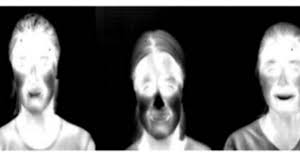Chip makers were aggressively researching on finding new materials to boost the chip performance in respect to bringing further miniaturization. Chips are known to get smaller and better in performance over each passing decade. This is achieved by finding new materials which can boost the performance at the same time working efficiently with the present platform. Currently chip manufacturers are utilizing the metallic germanium in order to maximize the potential of the chip in terms of performance and functionalities which integrates well with the silicon platform.
The features of metallic germanium
Germanium fits well all the requirements and it is widely used as a high mobility channel materials, a plasmonic conductor and a light emitting medium in the silicon integrated lasers. The reason for its being successful is it possesses a high electron density in three dimensions (3D).A simple approach can help in demonstrating the 3D assembly of the atoms found in the germanium by repeated stacking of two dimensional (2D) high density phosphorus layers. This results in producing a high density with relatively low resistivity metallic germanium of precisely defined thickness.
How germanium happens to work so efficiently?
In order to demonstrate the ability of the free electrons of metallic germanium converting from 2D dopant layers into a homogeneous 3D conductor certain specific measurements are used such as quantum interference measurements, density functional theory and atom probe topography. Metallic germanium is doped with homogenous concentrations of free electron which helps in creating low resistivity source or drain extensions in high mobility transistors.It is not feasible to use the mainstream top-down implantation for this purpose as enhanced dopant diffusion and formation of neutral complexes will create an electrical deviation. In order to control doping process from the bottom up self limiting surface reactions can be used.
This approach will lead to the creation of monolayer-doped semi conductors with much needed high density, two dimensional electron gases which are strongly confined. Utilizing the two approaches- the bottom and top down- it helps in extending the monolayer doping from just 2D to 3D. In this specific case the dopants are easily deposited in a single 2D layer while their effective distribution in 3D is obtained by thermal diffusion. The bottom up assembly of the metallic Germanic is only achieved by the repeated deposition of N nearly identical phosphorus doped layers. This approach helps in preserving the vertical atom precision which is associated with the monolayer doping and helps in creating homogenous 3D system.








